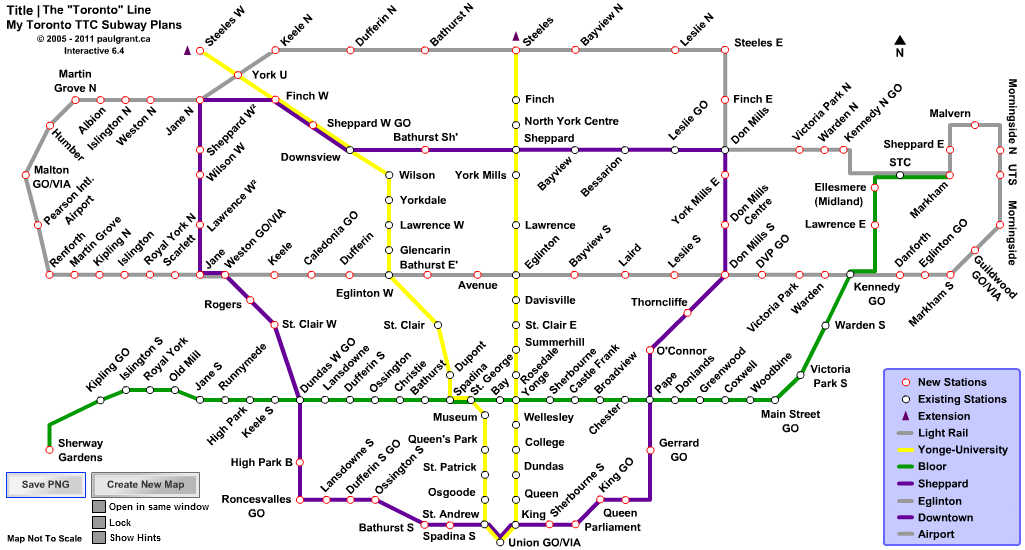reaperexpress
Senior Member
- DRL - obviously good idea (and should be the next major capital project, before any Sheppard, Yonge or B-D extensions). Exact routing can still be quibbled (and as you mentioned with Union, this will depend hugely on construction logistical issues, not just where people think it would make a pretty line on a map).
So I see that we do agree on something. The only reason the Sheppard West extension is even on the map is that I felt bad for the corridor because it has so many transfers. It is very low priority on the map. DRL is obviously the highest priority (phase 1 is between Exhibition and Pape), but Eglinton would most likely get built first because the plans are already underway.
- I don't agree with the idea of making the currently planned Eglinton LRT a full-fledged HRT subway (it definitely needs to be underground though in the central portion).
I put the Eglinton West line as a subway because it wouldn't cost that much more than the LRT. The central portion would cost the same as the LRT, so the only issue is west of Jane. If it as a subway, in addition to increasing speed and reliability, it would massively increase land values along the Richview corridor, where the City owns a reasonable amount of property. That could also help offset the cost of building a cut and cover subway under Eglinton.
- Beyond that, why not get some more TC-style lines to make it a true network and not just isolated lines?
I was trying to make a network, so I put all TC lines on the map except Eglinton West and Don Mills South, as both were replaced by subways. Scarborough-Malvern LRT is missing, because I don't really see the demand for it. I guess I forgot Jane, but I think there are space issues on the southern portion. I probably could add it from Steeles to Eglinton though.





